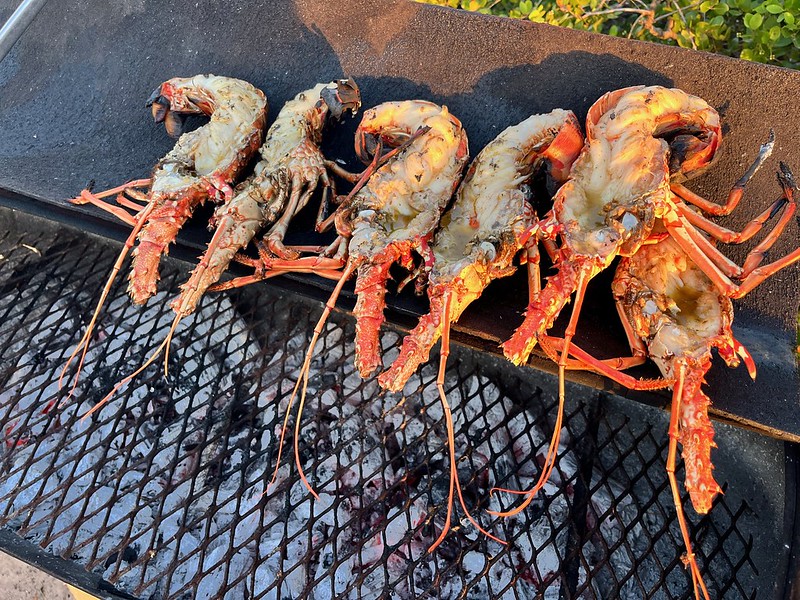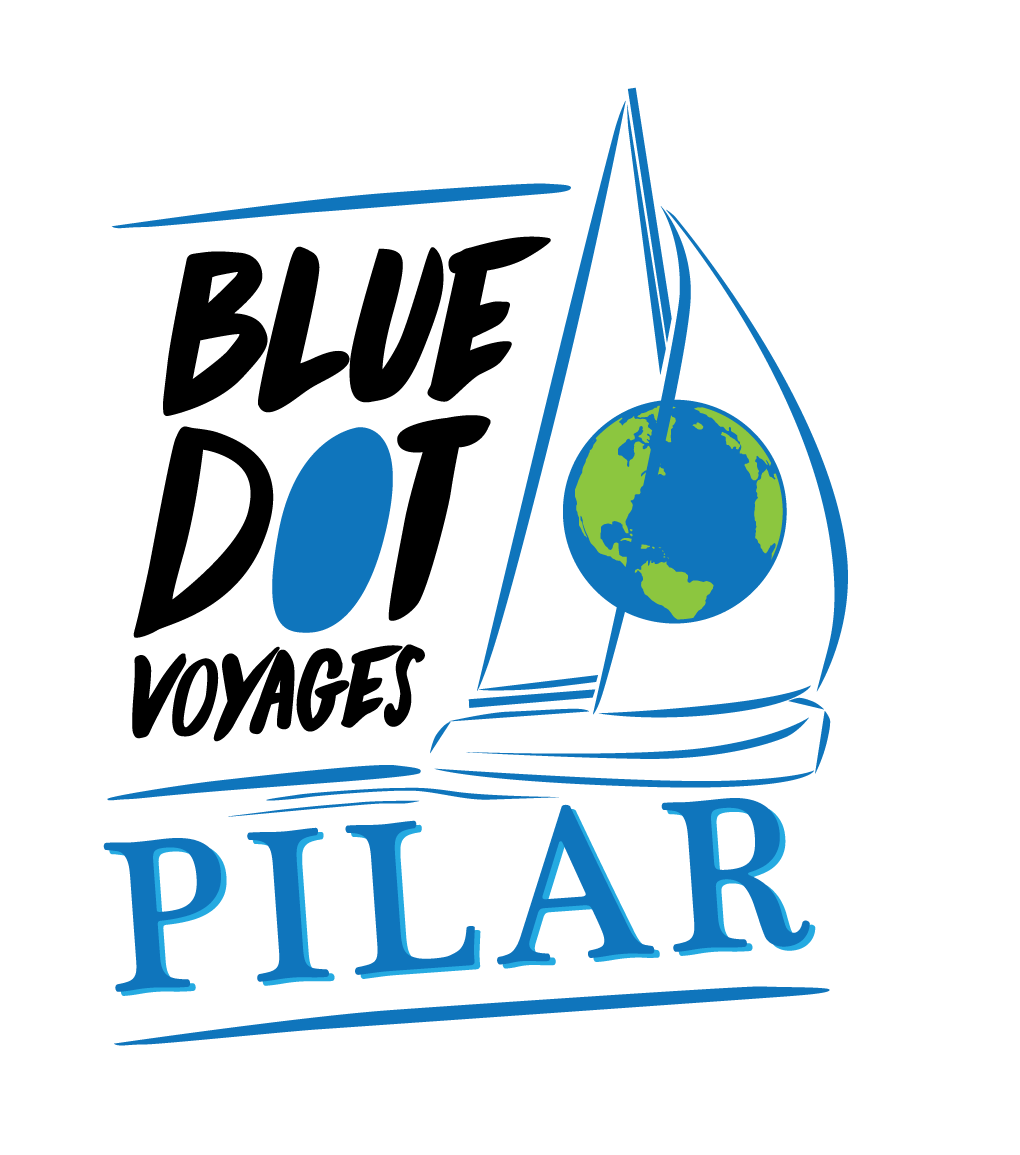We waited for the right wind to sail to Barbuda from Antigua. It was a bit squally with winds changing every 10 minutes, but a short 5 hours later, we anchored in Cocoa Point. But that was not an easy decision. We first aimed our sites at Codrington. As we got closer, we were not pleased with the swell conditions, so we thought “let’s go to Spanish Point”. So, an hour and a half later, we were there – in the middle of shallows! Not feeling comfortable and with the sun setting, we finally dropped anchor off Princess Margaret Beach.
We have a special guest for our Barbuda sailing adventure, Stephen’s son – Harrison Bell. Snow skate extraordinaire (instagram bellharrison). Harrison joined us for a pre holiday visit, so he could get back to Snow Country in time for the Holiday excitement. He had never been on our yacht before, so we were eager to show him our new way of life! Harrison even helped with boat maintenance by taking a trip up the mast for us!
Watch the video for the full experience.
In Barbuda, we enjoyed a lobster dinner on the Princess Diana beach at Shak a Kai – not to be missed! With two other Salty Dawg couples, we toured the Frigate Bird sanctuary, and visited Two Foot Bay Caves. We ran out of time for the Darby Sink hole and since we had not scheduled a tour guide we could not go, but maybe next time.

BTW, the Princess Margaret Beach anchorage has the most wind and wave protection of any in Barbuda. But be forewarned, dinghy access to beach requires getting wet! Our larger dinghy does not “beach” very well, but it sure comes in handy when we are exploring miles of waterways.
The Frigate Bird sanctuary is in Codrington Lagoon (near the only main town on the island). Estimates range from “2,500 to 6000 nesting pairs” . Hurricane Irma decreased the population some. These magnificent birds travel between the Caribbean and Galapagos islands during the varying mating seasons. The sanctuary is only accessible with a tour guide. We used George Jefferies (Call him at 268-788-7067). Our Taxi was with Devin 268-788-8419. Schedule your itinerary in advance!
The best time to visit is during the mating season, from September to April with December being peak time. The male frigate birds line up in the bushes, arch their heads back and inflate their red pouches. The females view from the sky and when she spots a suitor that impresses her, she’ll land and initiate a mating ritual. After mating, they take 2 weeks to build a nest from twigs that the male gathers. The female lays a single egg that both birds take turns watching over. It takes about seven weeks for the chick to hatch, and nearly six months for it to learn to fly and finally leave the nest.
Among the other bird species inhabiting the lagoon are pelicans, terns and gulls, as well as such endemic critters as the tropical mockingbird, the Christmas bird and the endangered West Indian whistling tree duck.

The female frigatebirds with their white breasts, are bigger than the males. They feed their chicks for about a year. Adult males are all black, except for their blood red pouch they inflate during the mating season. The wing span is six feet. The life span is 40 to 45 years. They fly at an altitude of 6,000 feet.
The Frigate birds have webbed feet that let them grasp branches, but they also have short legs so don’t walk well. Their feathers are not waterproof so they avoid landing on the water and only fly over the ocean surface for food. This creates a bit of a dilemma if they come too close to the water, they may well drown.
Cornell Lab of Ornithology calls frigatebirds the Pirates of the Sky because they harass each other and other birds into regurgitating recently captured food that they then snatch in midair.
Globally, the Cornell Lab estimates the population of frigatebirds is 59,000 to 71,000 breeding pairs, but notes that breeding is threatened by urban and resort development, overfishing, hurricanes and predator introductions on nesting islands.

Barbuda also offers Pink Sand Beaches, formed by pink shells breaking apart and washing ashore. Barbudaful is the term now used for the island.
Two Foot Caves is our next stop, accessible only by dirt paths – hence the name two foot. It is located on the northeastern cliff lined windward coast. While there are many caves in Barbuda, the Indian Cave has the only known Arawak petroglyphs on Barbuda.
Indian Cave is 35 feet tall, with bats hanging from the ceiling.

The roads in Barbuda are rough. The main town very small. Our taxi guide Devin tells us there are only 1600 residents and it ls like one big family. Everyone helps each other out. The reason there are so many half built homes is that no one takes a bank loan out. They build their homes slowly as they can afford materials. Power outside the main town is generators and solar.
Snorkeling the reefs we not the most healthy, but conch was abundant, and on the Spanish Point side of the island, there were hundreds of lobster traps set by fishermen who then sell them to restaurants in Antigua. That side of the island is exposed to more wind and waves, so we were not able to anchor there.
Back to Antigua today so Harrison can catch his flight. Sporty conditions on the windward side of Antigua – reminded me of our initial arrival back in November. Thanks for watching and if you would like to be notified of future videos, Subscribe on Youtube, or Follow us on Facebook or Instagram. Our next stop is Guadeloupe!


